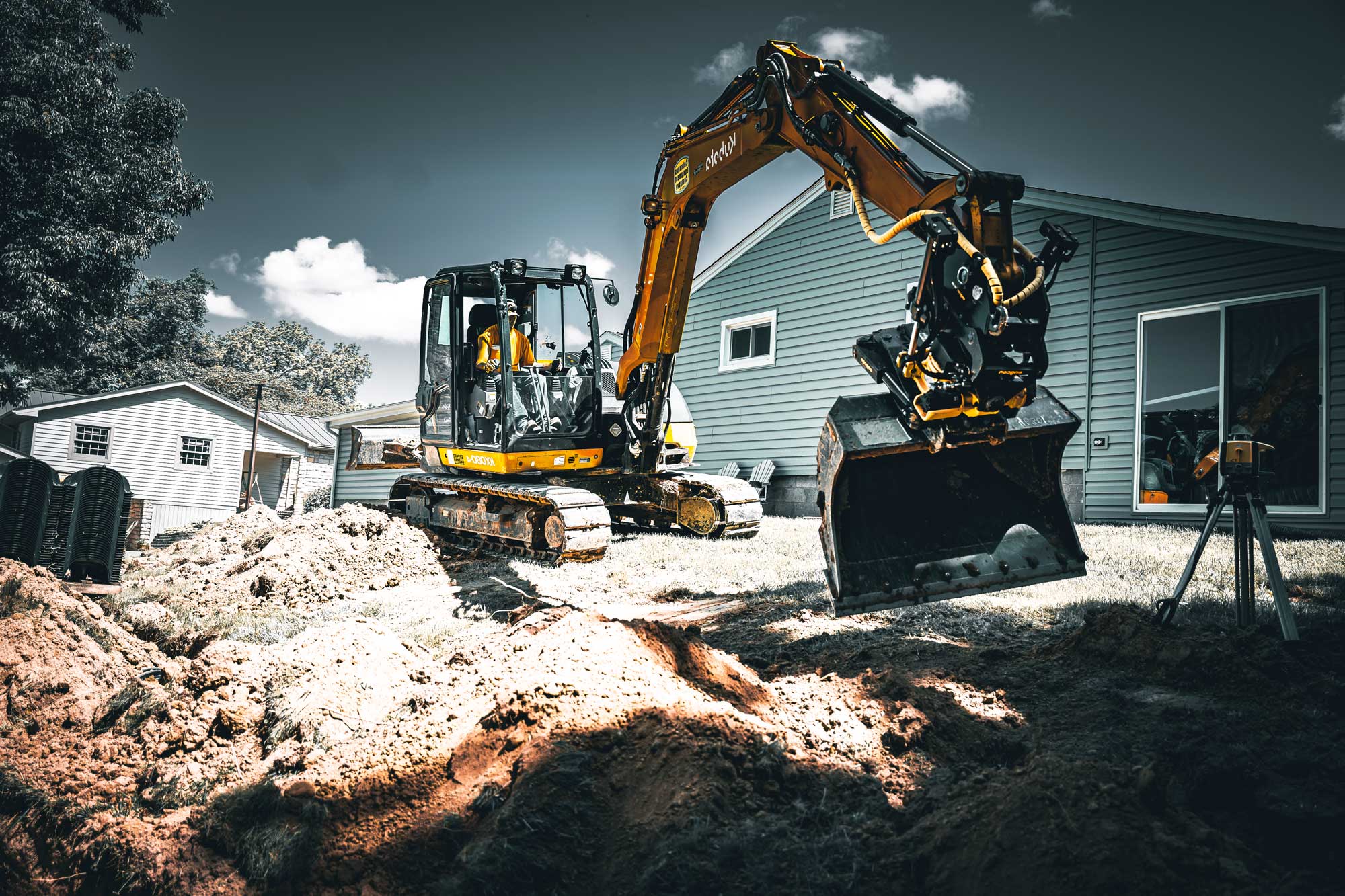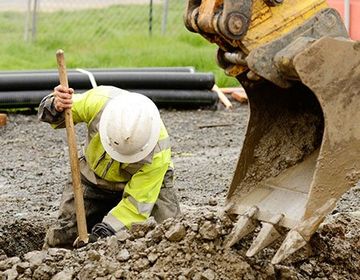Best Dump Truck Companies in Ohio - Top-Rated Dump Truck Providers
Best Dump Truck Companies in Ohio - Top-Rated Dump Truck Providers
Blog Article
Revealing the Art of Excavation: Pro Tips for Safe and Efficient Excavating
In the realm of excavation, the proficiency of productive and risk-free digging is an art kind that requires accuracy, understanding, and adherence to well-known techniques. As soil is transformed and earth is moved, the ins and outs of excavation expose themselves, demanding an eager understanding of devices, soil structure, security protocols, and ecological factors to consider. The experience required to navigate these components properly can mean the distinction between an effective excavation job and a possible catastrophe. By untangling the layers of this detailed process, a world of insights and strategies waits for those seeking to elevate their excavation abilities to new elevations.
Value of Proper Devices
To ensure the safety and security and performance of any type of excavation task, utilizing the appropriate devices is vital. The right devices not just enhance productivity however additionally mitigate risks related to digging. Excavation projects vary in extent and intricacy, ranging from small domestic landscaping jobs to large-scale building tasks. Despite the project size, having the right equipment can make a significant distinction in the result.
Excavators are essential pieces of machinery in any excavating procedure. These functional makers been available in different sizes to suit different project demands. Small excavators are suitable for smaller jobs, while larger excavators take on a lot more extensive tasks successfully. Backhoes are an additional vital equipment kind, integrating the features of a loader and an excavator in one machine. They are beneficial for tasks needing adaptability and maneuverability.
Excavators excel in jobs that call for pushing big amounts of dirt or particles. By spending in the ideal devices, excavation projects can be finished safely, on time, and with accuracy.
Understanding Dirt Structure
A comprehensive grasp of dirt composition is essential for executing excavation projects with precision and security. Recognizing the different types of dirt is essential as it directly impacts excavation methods, equipment selection, and overall project effectiveness.
Silt bits are smaller than sand yet larger than clay, providing modest drain and communication. Organic issue, such as decomposing plant product, affects dirt fertility and security.
Prior to beginning excavation, carrying out soil examinations to identify its composition and characteristics is important. This information aids in choosing the ideal devices, executing safety and security procedures, and developing excavation strategies customized to the particular dirt conditions - lancaster excavation. By recognizing soil make-up, excavation experts can boost task outcomes while making certain safety and security and adherence to best practices
Security Measures and Methods
Understanding dirt composition is the keystone upon which precaution and procedures for excavation projects are constructed, making certain the health of employees and the success of the endeavor. When it comes to safety and security throughout excavation, there are numerous crucial procedures that should be implemented to mitigate dangers and protect against accidents.
Primarily, prior to any digging commences, a thorough evaluation of the website should be performed to identify any kind of prospective dangers such as underground energies, unsteady soil conditions, or neighboring structures that could pose a danger. It is critical to have a proficient individual manage the excavation procedure to make certain that all safety and security protocols are adhered to purely.
In their explanation addition, all workers included in the excavation needs to be properly educated in secure digging practices and the proper procedure of tools. By sticking to these safety and security steps and methods, excavation projects can be finished effectively and without event.
Reliable Excavation Planning
When embarking on an excavation job, precise planning is important to ensure efficiency, security, and effective outcomes. Efficient excavation preparation entails several key actions that are critical for the smooth execution of the task. The initial step is to perform a thorough website evaluation to recognize any type of potential hazards, such as below ground utilities or unpredictable soil problems. This information is essential for establishing an in-depth excavation plan that consists of precaution and risk reduction methods.
When the site evaluation is complete, the following step is to create a clear timeline and timetable for the excavation tasks. This consists of establishing the series of jobs, devices requirements, and workforce appropriation. Proper organizing aids avoid delays and makes sure that the task remains on track.

Furthermore, interaction among all team members is vital throughout the preparation stage. Clear instructions, normal updates, and efficient coordination are necessary for an effective excavation task. By investing time and initiative in thorough planning, excavation teams can significantly improve productivity, minimize threats, and achieve effective outcomes.

Managing Ecological Considerations
With raising emphasis on ecological sustainability in building practices, taking care of environmental factors to consider has come to be an essential element of excavation projects. Excavation tasks have the navigate to these guys prospective to influence the surrounding setting with dirt disintegration, sediment drainage, environment disturbance, and contamination of water sources. To minimize these dangers, it is vital to carry out best techniques that prioritize environmental management.

Additionally, proper waste management is important to avoid soil and water contamination. Executing procedures for the disposal of dangerous materials, recycling of waste materials, and minimizing making use of hazardous chemicals can considerably decrease the environmental impact of excavation projects. By incorporating these techniques right into excavation preparation and implementation, building business can make certain that their jobs are not just safe and efficient but also ecologically responsible.
Verdict
Finally, grasping the art of excavation requires a comprehensive understanding of correct tools, soil structure, precaution, and effective preparation. By complying with these guidelines and thinking about environmental elements, excavations can be conducted securely and successfully. It is essential to prioritize safety and performance in every excavating task to make certain successful end results.
As soil is transformed and earth is relocated, the complexities of excavation disclose themselves, demanding an eager understanding of equipment, dirt composition, security protocols, and environmental factors to consider.To make sure the safety and security and effectiveness of any kind of excavation job, making use of the suitable tools is critical.A comprehensive understanding of soil structure is basic for implementing excavation projects with accuracy and security. Understanding the various types of dirt is critical as it directly impacts excavation techniques, devices option, and overall job performance. By understanding soil make-up, excavation professionals can improve task outcomes while making certain safety and adherence to finest methods.
Report this page